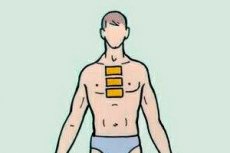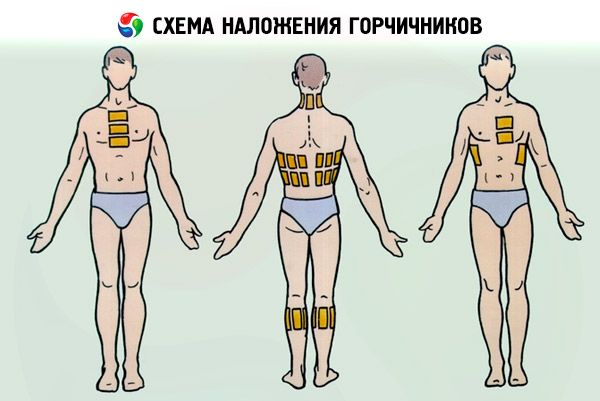
All iLive content is medically reviewed or fact checked to ensure as much factual accuracy as possible.
We have strict sourcing guidelines and only link to reputable media sites, academic research institutions and, whenever possible, medically peer reviewed studies. Note that the numbers in parentheses ([1], [2], etc.) are clickable links to these studies.
If you feel that any of our content is inaccurate, out-of-date, or otherwise questionable, please select it and press Ctrl + Enter.
How to correctly put mustard plasters for pneumonia in an adult and a child
Medical expert of the article
Last reviewed: 06.07.2025

Pneumonia or inflammation of the lungs is an inflammatory process in the human respiratory organ. It is caused by the entry of microbes, fungi, viruses, protozoa, and vapors of toxic chemicals into the organ. This is a serious disease, ignoring which can lead to death. Obviously, its main treatment is not in the use of mustard plasters, but in the use of medicinal drugs (antibiotics, anti-inflammatory drugs, bronchodilators). Nevertheless, in the not so distant past, mustard plasters were highly anticipated in the matter of recovery and were actively used. Science does not stand still, in recent decades various modern methods and new generations of pharmaceuticals have appeared. What is the role of mustard plasters today? Is it possible and necessary to use mustard plasters for pneumonia?
 [ 1 ]
[ 1 ]
Indications for the procedure
Indications for the procedure are diseases of the bronchopulmonary system, including pneumonia. Mustard plasters are not the main method of treating pathology, since they do not affect the factor of the disease and the pathogen, but are auxiliary. Their action has a reflex orientation, the mechanism of which is to irritate the skin and increase blood circulation, excite the sympathetic part of the central nervous system. Due to this, sputum is discharged more intensively, and the immune system increases its protective function.
Mustard plasters are sold in pharmacies, but it is easy to make them yourself. They are a rectangular sheet of paper with a thin layer of mustard powder applied to it. More modern ones are a bag of several cells filled with dry mustard. If you do not have mustard plasters at hand, but you need them, you can mix mustard powder in equal proportions with wheat flour or starch, dilute with warm water until it becomes mushy and apply an even layer half a centimeter thick to thick sheets of paper or fabric. Mustard plasters are ready. They are made just before use.
Technique mustard patch for pneumonia
Mustard plasters are usually put on at night so that after the procedure you can stay warm for a long time in a calm, relaxed state. How to put mustard plasters on pneumonia? The treatment will be effective if you put them on your back. To do this, the patient needs to lie on his stomach, turn his head to the side, take a comfortable position, quickly dip the mustard plaster in water, apply two sheets on each side between the shoulder blades and the spine and another row below, covering the side surface. Mustard plasters should be at a distance of 1.5 cm from each other.

Then cover your back with a towel and blanket. After a minute, check for a painful skin reaction. If everything is normal, stay in this position for 7-10 minutes. Mustard plasters "work" when the patient feels a tolerable burning sensation. The absence of a thermal sensation indicates old or poor-quality mustard plasters. To achieve the effect, it is recommended to apply mustard plasters for four days in a row. When applying to children, it is best to put thin paper or several layers of gauze under them, since children's skin is very delicate and burns may occur. Mustard plasters are not applied to the heart, kidneys, mammary glands, spine, irritated or injured skin, or birthmarks.
Contraindications to the procedure
Not everyone can use this procedure, it has its own contraindications. Mustard plasters cannot be applied if:
- elevated body temperature and two days after;
- oncological diseases;
- dermatological problems;
- allergies to mustard;
- tuberculosis;
- blood diseases;
- children under one year;
- pregnancy and breastfeeding.
 [ 5 ]
[ 5 ]
Reviews
According to reviews, people trust proven natural folk remedies for treating pneumonia that do not contain chemicals. They note the effectiveness of mustard plasters for severe coughs, facilitating the discharge of phlegm and the resorption of congestion.

